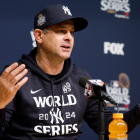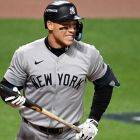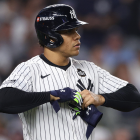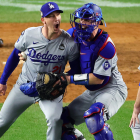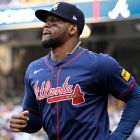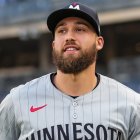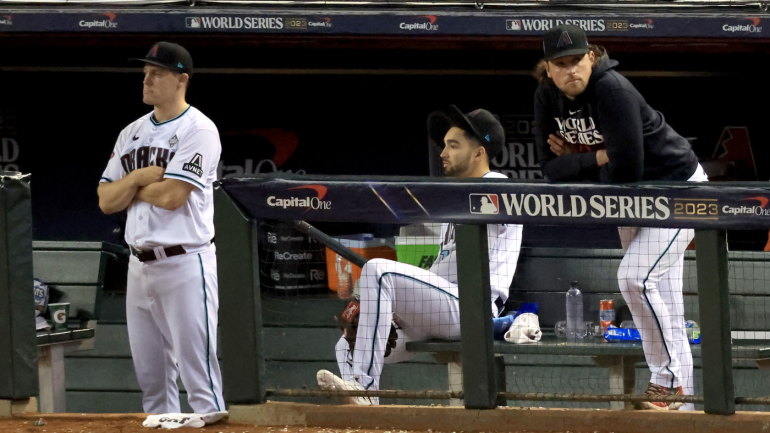
The Arizona Diamondbacks' impressive postseason run came to an end on Wednesday night with a loss to the Texas Rangers in Game 5 of the World Series. The D-backs had overcome the odds for most of October, dispatching two division winners in the Milwaukee Brewers and Los Angeles Dodgers and the reigning National League champion Philadelphia Phillies en route to the franchise's second pennant. In the end, the Rangers were too much to handle.
The Diamondbacks will now begin their offseason with an obvious goal in mind: to contend again for the World Series trophy next year. Just what will Arizona's front office need to do this winter to make it so? Below, CBS Sports has highlighted the three most pressing questions facing the D-backs.
1. How to fill out the rotation?
One of the main storylines of the postseason was how the Diamondbacks navigated a long series with essentially a two-pitcher rotation in Zac Gallen and Merrill Kelly. Youngster Brandon Pfaadt made manager Torey Lovullo's job easier by pitching much better during the playoffs than he had during the regular season. It seems downright reasonable, barring an injury or suspension, to pencil each of those three into Arizona's 2024 rotation.
Diamondbacks pitchers with 15 or more starts in 2023
| Pitcher | GS | ERA+ | SO/BB |
|---|---|---|---|
Zac Gallen | 34 | 125 | 4.68 |
Merrill Kelly | 30 | 132 | 2.71 |
27 | 82 | 2.09 | |
Brandon Pfaadt | 18 | 76 | 3.62 |
18 | 62 | 1.85 | |
16 | 105 | 1.83 |
Of course, the other two spots are to be determined. During the regular season, the Diamondbacks started 14 different pitchers. Ryne Nelson, Zach Davies, and Tommy Henry each received more than 16 starts apiece. Yet in the playoffs, the Diamondbacks were forced into bullpen games in both the NLCS and World Series. (Henry suffered an elbow injury in July and Davies was released in September.) The D-backs have a slew of unproven young starters who are either big league-ready or close to it, including former first-round picks Bryce Jarvis and Slade Cecconi, but it stands to reason they'll look to add at least one starter from outside the organization as a means of shoring up the rotation.
Pinpointing who that might be at this point is a fool's errand. For now, you can peruse our top-50 free agents rankings for yourself and pick out a few interesting names. Who knows, you might just pick correctly.
2. What to do in the outfield?
Here's the safest of safe bets: Corbin Carroll will start nearly every game that he's healthy for the Diamondbacks next season. The other two spots in the outfield seem less certain to us at this point in the process.
Alek Thomas, a former top prospect, will remain 23 until next April. He's coming off what could technically be described as a breakout postseason. He launched four home runs and posted a .734 OPS in 17 games -- he homered nine times and had a .647 OPS in 125 regular season contests. Thomas is a high-quality defender, but the Diamondbacks will need to ask themselves how much they believe in his bat -- and if there are any upgrades available.
While we suspect Thomas will return as Arizona's starting center fielder, the other corner-outfield spot is more of an open question. Tommy Pham is slated for free agency, meaning the D-backs would have to win the bidding if they want him to return for a full season. That might end up being their best option -- it's certainly hard to see the Diamondbacks standing pat and rolling with some timeshare consisting of Pavin Smith, Kyle Lewis, Dominic Fletcher, or Jake McCarthy.
We will note that the D-backs ought to have plenty of financial freedom. Their Opening Day payroll this season was $116 million, several million below the figures they ran out in 2018 and 2019. Cot's Contracts has them projected for a payroll around $83 million in 2024, although those numbers will remain in flux. Regardless, there's no reason for the Diamondbacks to cheap out this winter.
3. Who plays third?
The Diamondbacks started veteran Evan Longoria at the hot corner in 16 of their 18 postseason contests, a Barry Sanders-like change in direction after giving him just 10 starts all of September. At this point, it's possible that Longoria may have already played in his final big-league game.
After all, Longoria is an impending free agent who celebrated his 38th birthday in October. He openly discussed the possibility of retiring last winter before he signed a one-year pact with the D-backs in January. Longoria did hedge his bets during the playoff run by telling The Athletic that he would like to win a World Series before hanging up his cleats: "Can we win a ring and put a stamp on my career? That's really all I think about."
Even if Longoria plays on, the Diamondbacks should consider alternative solutions. Arizona received the fifth-worst production from the hot corner of any big-league team this season. Longoria has had a fantastic career, but logic dictates that he's not going to return to his past All-Star form again.
Not that the free-agent market offers many good choices. Our top-50 rankings include just three third basemen: Matt Chapman, Jeimer Candelario, and Gio Urshela. The D-backs could look to the trade market, which may feature several young Orioles infielders, as well as veterans like Jonathan India and Gleyber Torres. Shy of that, there's always a few notable internal candidates.
Emmanuel Rivera and Jace Peterson didn't get the job done this season, even if they make sense as a platoon on paper. Perhaps the Diamondbacks like them enough to try it again out of the gate next year. The more interesting option, in our estimation, is making use of their shortstop depth. Geraldo Perdomo is coming off a breakout season, and top prospect Jordan Lawlar is talented enough to make people forget his rough introduction in no time flat.
Whatever the Diamondbacks decide, at third base and otherwise, they're certain to be in for a winter of change. That's a welcomed reality when you arrive a year earlier than anticipated.











